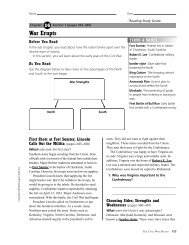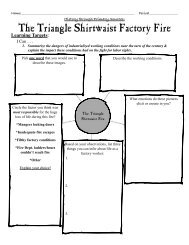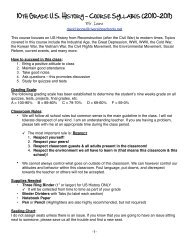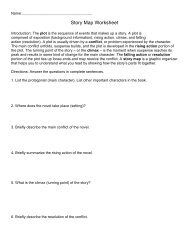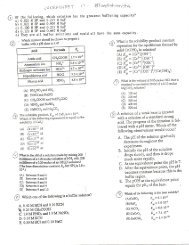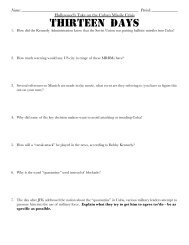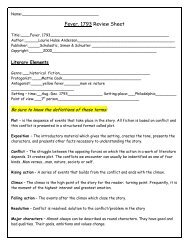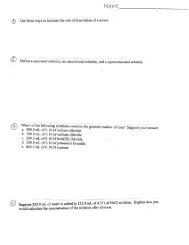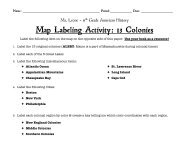Chapter 16 Text
Chapter 16 Text
Chapter 16 Text
Create successful ePaper yourself
Turn your PDF publications into a flip-book with our unique Google optimized e-Paper software.
The formation of hydronium ions is one of the complex features of the interaction<br />
of the H+ ion with liquid water. In fact, the H3O+ ion can form hydrogen<br />
bonds to additional H2O molecules to generate larger clusters of hydrated hydrogen<br />
ions, such as H5O2+ and H9O4+ (Figure <strong>16</strong>.1 ^).<br />
Chemists use H+(aq) and H3O+(flg) interchangeably to represent the same<br />
thing—namely the hydrated proton that is responsible for the characteristic properties<br />
of aqueous solutions of acids. We often use the H+(fl(f) ion for simplicity and<br />
convenience, as we did in Equation <strong>16</strong>.1. The H3O+(flg) ion, however, more closely<br />
represents reality.<br />
proton-Transfer Reactions<br />
VVhen we closely examine the reaction that occurs "when HC1 dissolves in water,<br />
we find that the HC1 molecule actually transfers an H+ ion (a proton) to a water<br />
molecule as depicted in Figure <strong>16</strong>.2 T. Thus, we can represent the reaction as<br />
occurring between an HC1 molecule and a water molecule to form hydronium<br />
and chloride ions:<br />
HC%) + H20{/) * H3O>g) + CT(aq) [<strong>16</strong>.3]<br />
Bransted and Lowry proposed defining acids and bases in terms of their<br />
ability to transfer protons. According to their definition, an acid is a substance<br />
(molecule or ion) that can donate a proton to another substance. Likewise, a base is a<br />
substance that can accept a proton. Thus, when HC1 dissolves in water (Equation<br />
<strong>16</strong>.3), HC1 acts as a Brensted-Lowry acid (it donates a proton to H2O), and F^O<br />
acts as a Br0nsted-Lowry base (it accepts a proton from HC1).<br />
Because the emphasis in the Bransted-Lowry concept is on proton transfer,<br />
the concept also applies to reactions that do not occur in aqueous solution. In<br />
the reaction between HC1 and NH3, for example, a proton is transferred from the<br />
acid HC1 to the base NH3: ><br />
<strong>16</strong>.2 Bransted-Lowry Acids and Bases 615<br />
:C1—H<br />
H<br />
H<br />
— H<br />
H<br />
I<br />
H—N—H<br />
H<br />
[<strong>16</strong>.4]<br />
This reaction can occur in the gas phase. The hazy film that forms on the windows<br />
of general chemistry laboratories and on glassware in the |ab is largely solid<br />
NH4C1 formed by the gas-phase reaction of HC1 and NH3 (Figure <strong>16</strong>.3 T).<br />
(b)<br />
A. Figure <strong>16</strong>.1 Lewis structures and<br />
molecular models for H5O2+ and H9O4+.<br />
There is good experimental evidence for<br />
the existence of both these species.<br />
A. Figure <strong>16</strong>.2 When a proton is<br />
transferred from HC! to H2O, HCI acts as<br />
the Br0nsted-Lowry acid and H2O acts<br />
as the Br0nsted-Lowry base.<br />
A Figure <strong>16</strong>.3 The HC\(g) escaping<br />
from concentrated hydrochloric acid and<br />
the NHs^) escaping from aqueous<br />
ammonia (here labeled ammonium<br />
hydroxide) combine to form a white fog<br />
of NH4CI(s).



